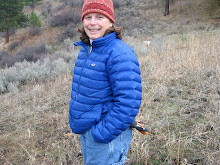 Years ago I did a masters thesis on clustering housing around "working forests." Later I gave a presentation at the Kennedy School for Government at Harvard on the same topic. In New England, the idea caught on and there are several developments, now, around forests which are managed for timber products. So it didn't surprise me to read that the new thing is clustering housing around working farms or ranches. It's the ultimate in eating from local sources.
Years ago I did a masters thesis on clustering housing around "working forests." Later I gave a presentation at the Kennedy School for Government at Harvard on the same topic. In New England, the idea caught on and there are several developments, now, around forests which are managed for timber products. So it didn't surprise me to read that the new thing is clustering housing around working farms or ranches. It's the ultimate in eating from local sources.It's a great idea and it's popularity confirms what the Pew polling data shows, that people prefer to live in single family houses with surrounding open space. While suburbs may be unpopular for many so-called "environmentalists," it's still the dream of most Americans.
In Seattle there is a density dogma. Funneling people into mass transit (I call it planning for lemmings), using behavioral strategies to "nudge" people out of cars, and upzoning in neighborhoods to allow for mass and density in projects (or the nail salon buildings where there are apartments or condos above retail which either remains empty or has amazingly tenacious nail salons as tenants). In a matter of a few years we have gone from a charming city with dozens of quirky neighborhoods to a cranky city with cookie-cutter buildings on every single block. However, it is virtually impossible, if you're an aspiring policy maker or politician, to question this urban planning. Every single interest group, from realtors to environmentalists have bought into it (for a variety of reasons which are at odds with each stakeholder group). But it is also an unrealistic and frankly elitist way of trying to make people conform to a way of life that doesn't exist. It's as if the planners and stakeholders are incapable of even examining their own life patterns: the trips to the doctor, taking kids to soccer games, having to care give for elderly parents, wanting to take in a concert or play...I suppose it's ok for them to use their cars but not anyone else (the Seattle mayor famously has said he can't bike to work because he needs a security detail! Yeah, right).
So here it is, the lusting after the bucolic but being told living in homogenous canyon-like cities is better. And how did these urban planners get in control?




No comments:
Post a Comment